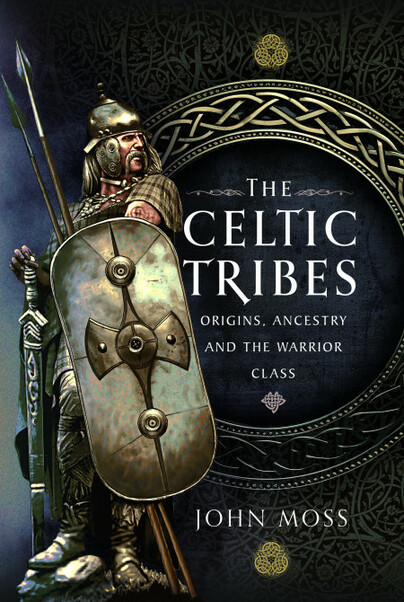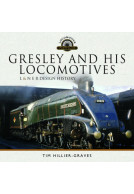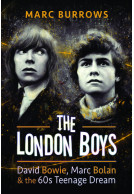Celtic Places and Placenames (Hardback)
Heritage Sites and the Historical Roots of Six Nations
Imprint: Pen & Sword History
Pages: 304
Illustrations: 20 mono
ISBN: 9781399087476
Published: 28th July 2022
(click here for international delivery rates)
Order within the next 8 hours, 24 minutes to get your order processed the next working day!
Need a currency converter? Check XE.com for live rates
| Other formats available - Buy the Hardback and get the eBook for £1.99! | Price |
|---|---|
| Celtic Places and Placenames ePub (21.0 MB) Add to Basket | £6.99 |
‘Celtic Places’ are typified by some several hundred townships and villages whose names still bear the imprint of their earliest Celtic roots, but the scope of the book is not restricted to human settlements; it is also true of the many mountains and rivers that they named, and to several thousand sites of standing stone monuments, Celtic high crosses, henges, hill figures, funeral barrows and hillforts, which are all included in the book.
What they all have in common is that they reflect the rich cultural heritage that was implicit in the names of places in the British Isles and Ireland as it existed before the Romans arrived.
'a useful book for researchers as well as the merely curious.'
Beating Tsundoku
Read the Full Review Here
As featured in
Scottish Field
As featured in
The Countryman
As featured in
Cambrian News (South)
Rating: 5 out of 5 stars
NetGalley, John Lloyd
A very thorough reference book, this looks at all the places around Britain, Ireland and Brittany with names derived from the Gaelic tongues, and describes and defines them all. So, starting with Advent (barely three hamlets strung around a church) on Bodmin Moor, and ending with Vannes in Morbihan we can check up on all the historical derivations. In between, separate chapters break down into looking at mountain names, lists of hill forts, and a select few cairns, barrows and henges that always fascinate the lucky visitor.
And this is pretty deep stuff. Just turning briefly to the Manx section you find talk of the “sheading of Rushen”, which itself is a very archaic term, to us on the Mainland at least. Places like Castletown are here, too – just because the name seems as plainly English as you can get, that doesn’t mean it’s the only name it’s ever had. Many places in Scotland have swapped about – some becoming English at times, and others with names heavily taken over by Viking influence and replacements; we get mini-essays about all these movements of peoples that influence what we have on our signposts and maps today.
Reviewer: Edmund Perry
The Ancestor, August 2022
Some place name books fall into the category of travel guides: where to go and what to see. However, John Moss has produced another solid contribution to the use of language in the study of local history. Every chapter has an interesting introductory background and each place has its own short paragraph explaining the derivation of the name and its meaning.
This language-focused study is a useful reference book from which to understand those local place names and learn their significance to ancient history. It contains numerous original maps of the relevant areas along with the distribution of the Celtic tribes, plus a short Bibliography and a lengthy Index. To anyone unfamiliar with the early Celtic history of the British Isles, John Moss has produced an important and readable primer.
I would say that if your into local history you would get a lot out of this book as I would highly recommend it.
The History Fella
Read the full review here
An interesting book about places and the origin of their names. I learned something new and it's a compelling read.
NetGalley, Anna Maria Giacomasso
Recommended.
“A people without knowledge of their past history, origin and culture is like a tree without roots.” –Marcus Garvey
NetGalley, Alexa Arellano
John Moss skillfully introduces us to the colorful history of heritage sites through this short, though thoroughly researched nonfiction book, but reading Celtic places is a lot more like coming home. Its brevity means the journey through time is never tedious, and it has all the familiarity of it as it takes us through the history of Celts as if we have also lived there our whole lives. it has a distinct, eye-catching cover and provides maps and illustrations for the convenience of the reader. Every reader should have a place for Celtic places on the travel section of their bookshelf.
This was interesting to read about the meanings of various towns, rivers and other places that have Celtic names. It was great reading that several of the older languages are making a comeback and it’s being taught in schools.
NetGalley, Anna A.
There are a lot of really interesting tidbits of information! I will definitely be referencing this book the next time I visit Ireland or Scotland.
NetGalley, Kasey Colligan
Rating: 5 out of 5 stars
NetGalley, Magdalena Šejdová
When I opened the book for the first time, I understood that this work should be in each household in the United Kingdom because Celtic places are everywhere. Literally. The structure of this book is helpful in organising the trips or it can also serve as a handy assistant. You open the relevant chapter and see the Celtic places around you.
In the beginning, the author introduced the common Celtic place name elements. Some of them are generally known thanks to the fascination of Outlander such as GLENN – valley. Another seems to be a tongue twister (CWM – narrow valley). We can also see the similarities with the other languages (PONT – bridge – le pont). These place name elements can be read many times and it never bores.
The following chapters have always the same structure. A short historical introduction to the topic (Cornwall, Ireland, The Isle of Man, Scotland and the English Borders, Wales and the Marches, rivers, mountains, bronze and iron age hillforts, stone circles, Celtic crosses and Britanny) and the exhaustive list of all Celtic names related to it.
The book contains only black-and-white illustrations and maps of the described locations. It can be a disadvantage for some people, but in my opinion, it provides a fantastic opportunity to visit all these places personally.
To summarize – this book provides what it promises. The overview of Celtic places. The biggest advantage is that it can be read many times.
About John Moss
John Moss studied Fine Arts and English in Wolverhampton and Manchester Art Schools, before taking early retirement after teaching and lecturing in Art & Design. He founded a Graphic Design company in 1997. Retired at last, he began writing: a science fiction trilogy in 2013. His first two non-fiction books were Great British Family Names and A History of English Placenames, both written for Pen and Sword: this will be the third history book in the series.
The Celtic Tribes Origins, Ancestry & The Warrior Class (Hardback)
The people we know as the Celts were an Iron Age culture that originated in central Europe, probably around modern-day Hungary, Southern Germany and the Czech Republic, some three thousand years ago. They were groups of distinct tribal peoples who shared a common language and culture that thrived until they were confronted by an aggressive and expansionist Roman Empire set on conquest. This book traces their many migrations westward over the following centuries, and their advances into the Atlantic coastal regions, especially into countries like France, Spain, Portugal, Belgium, Britain and Ireland,…
By John MossClick here to buy both titles for £50.00


















